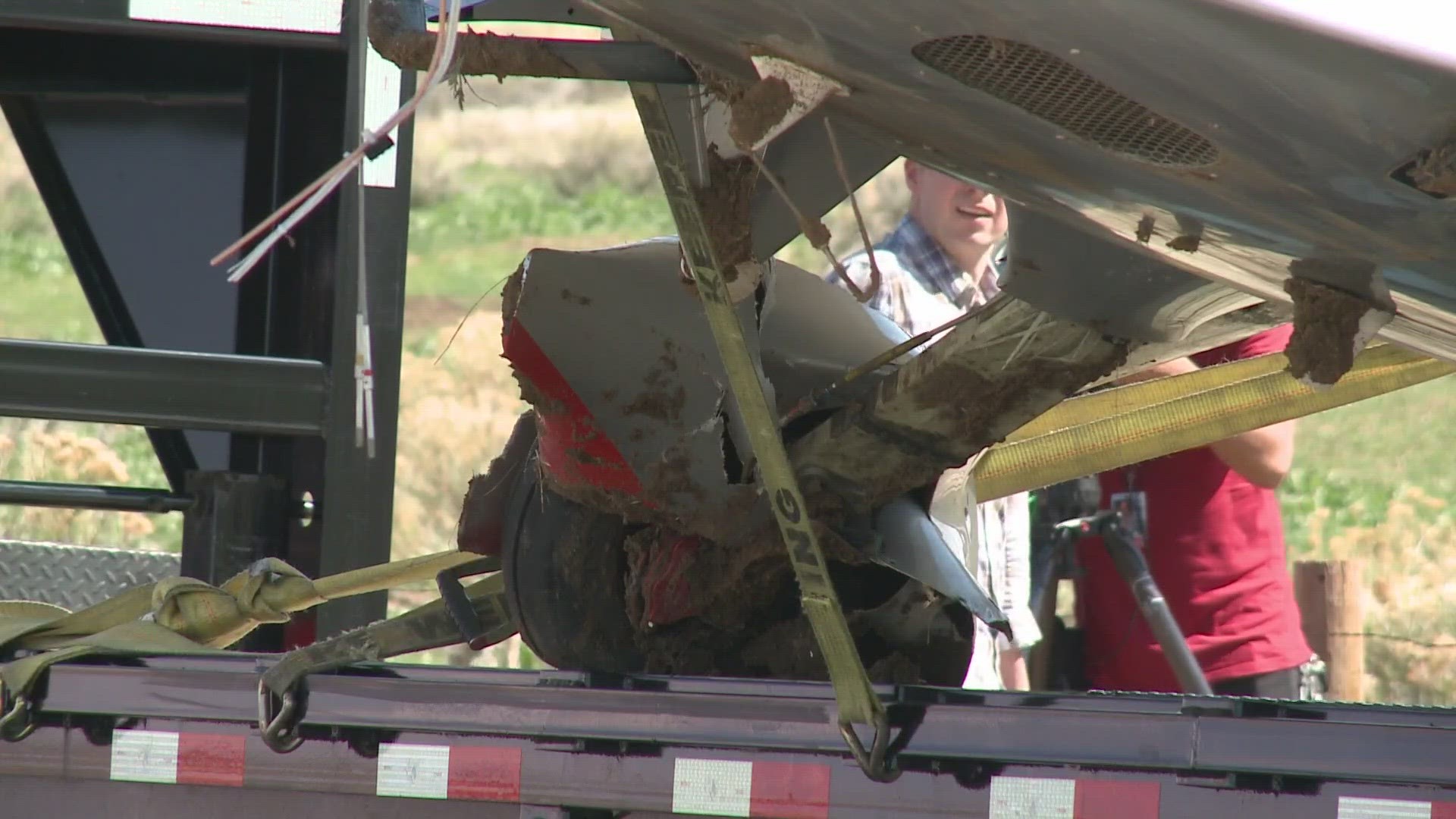CENTENNIAL, Colo. — The National Transportation Safety Board (NTSB) said a speeding pilot -- and the failure of an air traffic controller to warn another aircraft of a plane in the area -- led to a mid-air collision near Centennial Airport in May 2021.
No one was injured in the crash, which was called an "aviation miracle" by some experts due to the significant damage to both planes. One pilot deployed a parachute to soften his plane's landing in Cherry Creek State Park, the other was able to land safely at Centennial Airport.
The collision occurred while both planes were preparing to land on Centennial's parallel runways, the NTSB said. The pilot of a Cirrus SR-22 was speeding more than 50 knots above the manufacturer's recommended speed for the maneuver and overshot his turn toward the runway, the NTSB said.
The Cirrus then collided with the Swearingen Metroliner, whose pilot didn't know to look out for other aircraft in the area because an air traffic controller failed to warn the pilot, the report said.
That warning is especially important at Centennial -- one of the nation's busiest general aviation airports -- because the two parallel runways are unusually close, said 9NEWS aviation expert Greg Feith.
"This one is 700 feet centerline to centerline and when you have that kind of distance you don't have a lot of margin for error," he said.
In the NTSB report, air traffic controllers acknowledged concerns about planes hitting each other on the parallel runways. "The close parallel runway configuration was “inherently risky, but mitigatable (sic),” one controller told investigators.
The "conflict alerts" warning controllers aircrafts are too close goes off so frequently, another controller described it as "white noise" that was not relied upon, in part because it often goes off late.
The Colorado Sun initially reported the air traffic controllers' concerns, which also included short staffing in the control tower and how busy airport operations can get. Several controllers told investigators they believed the concerns were manageable and appropriately addressed by existing procedures.
"It’s the second busiest general aviation airport in the country based on operations," Feith said. He wished the NTSB investigators had taken a broader approach to their investigation and examined recommending retraining or reevaluation of the airport and control tower procedures -- even if the people executing them are the ones responsible for this wreck.
"These kinds of accidents are really human-based," he said. "That is because humans will get distracted, they get complacent, they will make a mistake."
Airport officials have previously said they believe the Federal Aviation Administration (FAA) made a change to its flight patterns after the collision, which has led to an increase in noise complaints from neighbors north of the runways.
They've asked FAA representatives to begin attending the airport's noise reduction roundtables as a result.
Despite his warnings of the unusually close runways at a historically busy airport, Feith said neighbors nearby do not need to worry about another mid-air collision. "People should have confidence really in the air traffic control system and the FAA that these accidents are not a daily event, they are an anomaly," he said.
SUGGESTED VIDEOS: Latest from 9NEWS

